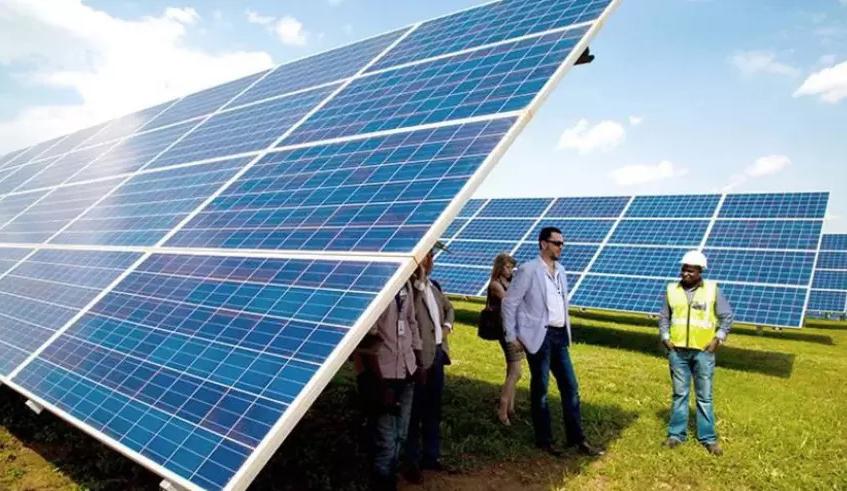Africa-Press – Liberia. Rounding up its final days in Glasgow, COP26 will soon come to its inevitable close. The world’s most acclaimed climate event has brought some exciting yet unsatisfying agreements and deals meant to address the growing climate crisis.
Methane emissions were the focus of The Global Methane Pledge, a joint agreement to cut global methane emissions by 30% from 2020 levels in all industries by 2030. This meaningful commitment could reduce global warming by 0.2 degrees Celsius by 2050. According to a UN report, it is the most robust, most accessible measure that can be taken to slow down climate change over the next 25 years. Another critical initiative targets coal, the single most significant contributor to climate change. Over 40 countries and dozens of organizations have committed to ending all investment in new coal power generation domestically and internationally.
They have also agreed to phase out coal power in the 2030s for major economies and the 2040s for developing nations. These pledges, among other initiatives taken at the global summit, are well and good, but they target only one aspect of the fight against climate change – mitigating the risk. Another aspect is becoming a prevalent topic in the past few months, and the two are crucial in achieving sustainable impact.
Mitigation or Adaptation?
When discussing global pledges and initiatives, we can divide all actions into two major sections. The first is mitigation, focusing on making the impacts of climate change less acute by preventing or reducing the emission of greenhouse gases (GHG) into the atmosphere. Mitigation is achieved by reducing the sources of these gases (choosing renewable energy over coal, for example) or by enhancing the storage of these gases (through innovative technologies or tree planting, for example)
The second is adaptation, focusing on anticipating the effects of climate change and taking appropriate action to prevent or minimize the damage. Examples include adapted infrastructure changes, such as buildings that can stand sea-level rise, alongside behavioral shifts, such as people composting their food waste.
To sum it up, mitigation tackles the causes and minimizes the possible impacts of climate change. At the same time, Adaptation looks at reducing the adverse effects and taking advantage of any opportunities that arise.
At COP26, global leaders primarily focus on mitigating initiatives, with the methane and coal pledges falling under that category. But the adaptation discussion is becoming more prevalent, although often considered as an admittance of failure -if you seek adaptive action, it means your previous pledges have failed and that you haven’t done enough to tackle this crucial subject. Political entities and business leaders alike are not very keen on taking that type of action.
Putting political and business interests aside, adaptation action could not be more crucial at this point, as most scientists say our planet is well beyond the breakpoint and that a 1.5 and even 2 degrees Celsius rise is undoubtedly in the books. For actual climate action, mitigation and Adaptation must co-exist and should be put at the top of the global agenda.
Solar energy is doing both
Solar energy is one prominent solution that is already changing millions of lives in every possible aspect. To understand the vast opportunities this renewable asset holds, we look at Africa, currently setting a global example for solar usage.
For mitigation, solar energy is gradually replacing the combustible fuels currency used by these communities for lighting, cooking, and heating purposes. Every solar home system used is known to have the capability of providing the electricity needs of an entire home with about 80% lower carbon emissions than fossil fuels. Overall, the mitigation aspect is clear as day and does not need further explaining, as renewable energy is the poster child for it.
The adaptation aspect is where it gets interesting. Solar energy is already helping entire African communities prepare for climate change’s vast effects by providing electricity access for the first time with solar home systems (SHS). Electricity access is known and recognised to be an essential catalizator for financial inclusivity. With electricity at home, children can study after dark, get a better education, and have more possibilities for future jobs. Women and girls in sub-Saharan Africa, currently spending over 8 hours a day procuring wood for lighting and heating purposes, can study and open new businesses. Farmers can spend more time sorting their crops, losing fewer yields, making more money, and raising food security. Families are also spending less money on their SHS than they do today on combustible fuels that heat and light their homes. And the open fires used today for cooking and heating – which cause 4 million deaths a year globally, contribute to respiratory diseases, and pose a fire hazard, are replaced by sustainable solar options.
All these examples and more are taking families out of the poverty circle, providing them with higher income, helping them depend on more than agriculture, and allowing them the opportunity to prosper alongside the ever-increasing floods, droughts, and sea level rises.
Solar energy is the best, most effective solution for country leaders, business moguls, and global investors looking to set their mark on the climate agenda. The time for action is now
For More News And Analysis About Liberia Follow Africa-Press






